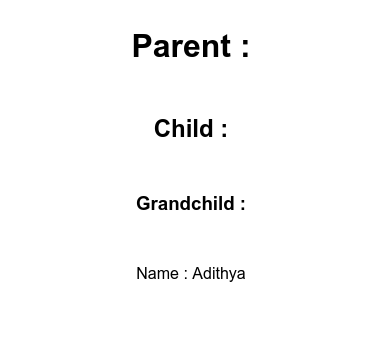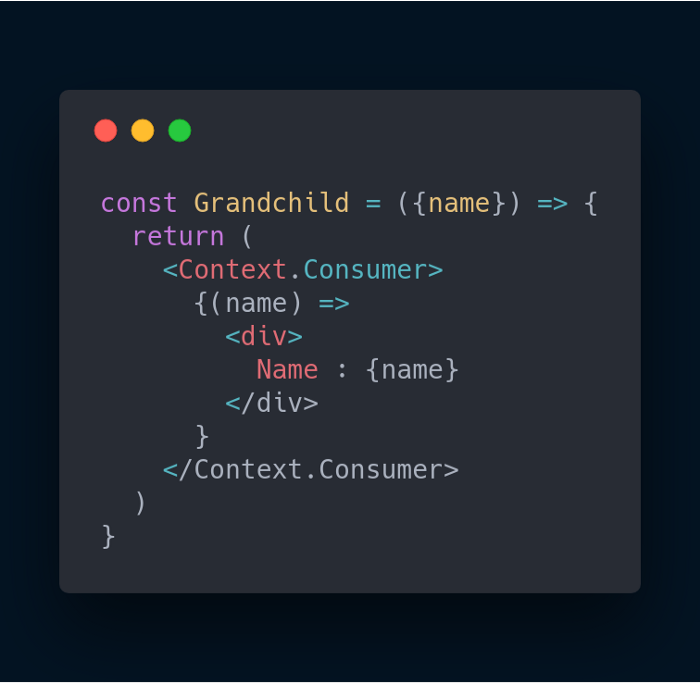Have you ever experienced the pain of trying to get state from the top of your react tree to the bottom? This pain you’re feeling is called “prop threading” and it’s super annoying. You wind up having to pass props through components that don’t care about the data just so you can send it down to components that do care. And as you move components around, this pain is magnified.

Let us go through the pain for one last time!
So our App is structured in such a way that the App component renders Parent, which renders Child, which renders Grandchild. However, what’s important to notice here is that the Grandchild component wants to render name — but the data for name lives inside the App component.
Because Grandchild is so deeply nested, we have to pass the name prop one-by-one from App through all the components until it reaches Grandchild. What’s more: we must do this even if any of the components along the way (Parent and Child) aren’t even concerned with the name data!
This process of “threading props” to send data to a child component can be tiresome, and perhaps even error-prone. Luckily, we can avoid it with React’s Context API.




All this trouble to display a name 😥
Lets see how our app looks like…


Here comes the context API to save the day!

Now let’s take a look at how context api helps us to pass data only to the component which requires the specific data.
To begin, we’ll use React’s createContext() function to return an object with a Provider as well as a Consumer.

The Provider component is used in the upper level of the component tree; that is, the component from which the data to be passed is held. In our case, this was the App component. We passed the name data as the value of Provider’s value prop:

On the receiving end (i.e., a component “under” the Provider in the component hierarchy), we use the Consumer component. In our example, we passed Consumer a function as a child. This function accepts a value and returns some JSX:

As a result, we were able to render the Grandchild component with the correct name data without ever having to pass that data down the entire component thread! That’s a lot less code than the previous way we had to do it. So React’s Context API provides a brief, approachable way to easily communicate information from one component to another.
Let’s take a look at our app now…

And we don’t have to pass the data as props down the parent and child components anymore!!


You can find the source code here : https://github.com/AdithyaBhat17/learning-context-api
Happy coding 🥳